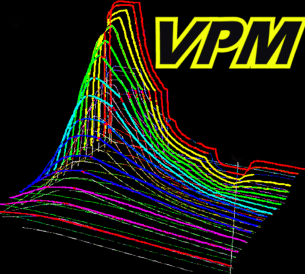|
|
VPM Technical Publications
Materials Copyright 1999-2009 by Eric Maiken, Erik Baker, and David Yount
|

|
|
|
|
|
|
|
|
|
Here are links to articles and publications on the VPM and decompression
modeling Decompression.org ftp site Folders full of decompression-related technical articles and computer code
are at the site: To access the site, you'll need login credentials (anonymous ftp will not work): My folder is:
VPM-B Decompressions Compared to RGBM, GF-Buhlmann, and NOAA Tables Back in 2003-2004, I ran hundreds of ascent profiles through a number of
commercial programs, and quantitatively compared VPM-B decompressions to ascents
calculated by RGBM, GF and NOAA algorithms. There are a few notation and formatting errors in the docs: Here are 8 pdfs that compare decompressions by VPM to ascents on other models: 0. Read First
UHMS Meeting During 1999 and 2000, David Yount, Erik Baker and I collaborated to extend the VPM decompression algorithm to model repetitive, mixed-gas decompression diving. The following material includes publications as well as behind-the-scenes discussions of technical aspects of the VPM as applied to the real world of diving. David Yount passed away just prior to this presentation of the details of the latest development of his VPM diving decompression algorithm. Mahalo David! How fortunate you were to see your pioneering work in decompression theory come to fruition. A poster, in powerpoint format, describes A New VPM Algorithm for Repetitive Dives , David E. Yount, Eric B. Maiken, and Erik C. Baker The Reverse Diving Profiles Workshop Our manuscript Implications of the Varying Permeability Model for Reverse Dive Profiles , David E. Yount, Eric B. Maiken, and Erik C. Baker is available in pdf format."VPMechanics" Series of Mathematica Notebooks The following pages were created from Mathematica notebooks that I put together during discussions with David and Erik as we prepared for the Reverse Diving Profiles Workshop (RDPW). The pages need some work to fix broken fonts that were created by saving the original Mathematica notebooks in html.RDPW3A.htm Tracks the compartment tensions and supersaturation gradients of a reverse dive profile posted by Erik Baker on the deco mailing list. 9/13/99 VPMechanics1.htm Discusses the VPM algorithm, with
application to a 100 fsw air dive. 9/14/99 VPMechanics7.htm How a diver's descent rate influences the minimum ascent gradients. 10/23/99 VPMechanics8.htm How a diver's ascent rate affects the minimum ascent gradients. 10/14/99 VPMechanics9.htm A close look at the dynamic critical volume method for non-decompression diving. 11/1/99 VPMechanics10.htm Repetitive diving and the VPM. 11/1/99 Some Notes on the VPM Model
|
|
